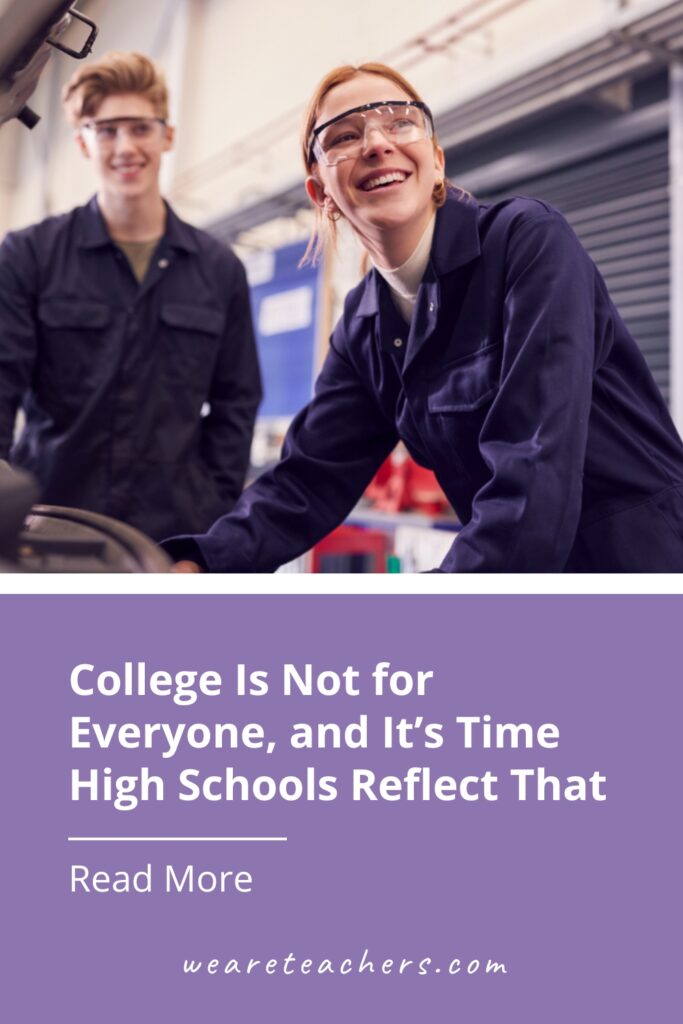American education is always shifting, and it’s no surprise there is a growing skepticism toward the value of a college degree. With college fees reaching unprecedented highs, the question of whether higher education ensures a financially secure future is more relevant than ever. College is not for everyone, and this conversation is fueled by the results of a new analysis:
One-quarter (25%) of higher-education attendees earn less than high school graduates a decade after enrollment.
These results from an exhaustive analysis is a stark reminder of the financial gamble that higher education has become for many. Despite the well-documented wage premium that college graduates typically enjoy over their lifetime, these results highlight that the return on investment in education is far from guaranteed. They find that 8% of their included institutions see students’ median income below $22,000 a year, a figure alarmingly close to 150% of the federal poverty line. This problem is worsened considering the average college debt exceeds $37,000 per borrower.
According to a poll, 56% of Americans are starting to question the value of a four-year college degree. This skepticism is compounded by the finding that a considerable number of students, particularly those from for-profit institutions and trade schools, may end up in a worse financial position than if they had stopped their education after high school.
How should high schools respond?
As we navigate this reality, it becomes imperative for high schools to adapt, offering guidance that encompasses the full spectrum of post-secondary options. High schools play a crucial role in guiding students toward their future paths. They should recognize that college is not the one-size-fits-all solution it once was. To address this, schools should:
1. Start treating vocational training as an equally valid choice instead of a contingency plan.
- Highlight the value of vocational training, apprenticeships, and community colleges as valid and valuable post-secondary options alongside four-year degrees.
- Introduce students to career and technical education (CTE) programs that align with in-demand job markets.
2. Start with students’ goals and interests and work backward.
- Implement programs or courses that help students identify their interests, strengths, and career aspirations.
- Encourage students to consider their personal and financial goals when making education and career choices.
3. Provide real-world learning opportunities when it comes to careers.
- Facilitate internships, job shadowing, and mentorship programs with local businesses and community organizations.
- Offer experiential learning projects that connect academic concepts to real-world applications.
4. Expand access to career counseling.
- Invest in comprehensive career counseling services that help students navigate their post–high school options.
- Train counselors to challenge the “college for all” narrative and to support students in exploring diverse paths.
5. Offer gap-year information for interested students.
- Educate students about the benefits of and opportunities for gap years, including programs that offer financial aid.
- Highlight gap-year experiences as a way to gain clarity, develop skills, and explore interests before committing to further education.
6. Be aware of and counteract social pressures.
- Develop programs that address the societal and peer pressures surrounding the pursuit of a college degree.
- Showcase success stories of individuals who have followed non-traditional paths to success.
7. Adjust the way we advise students academically.
- Ensure that academic advising includes discussions about the financial implications of college, potential debt, and the realistic outcomes of different fields of study.
- Provide resources and tools for comparing the long-term value of various post-secondary options.
8. Foster a culture of informed decision-making.
- Create an environment where all post-secondary paths are valued equally.
- Encourage students to make decisions based on their personal situation, interests, and the current economic landscape.
Overall, the findings from this recent analysis highlights that a significant portion of higher-education attendees may not reap the financial benefits once promised by a college degree. The one-size-fits-all approach to post-secondary education is outdated, and schools need a more individualized strategy. High schools should broaden their offerings, including vocational training, apprenticeships, and community colleges. Such an approach is essential to align educational pathways with the varied needs and aspirations of students, ensuring they are equipped for success in an evolving job market. As the landscape of higher education undergoes significant shifts, the imperative for high schools to adapt and evolve becomes increasingly apparent.
College is not for everyone. The question that remains is, will our high schools rise to the challenge and embrace the necessary changes to support the future success of their students?
For more articles like this, be sure to subscribe to our newsletters.


